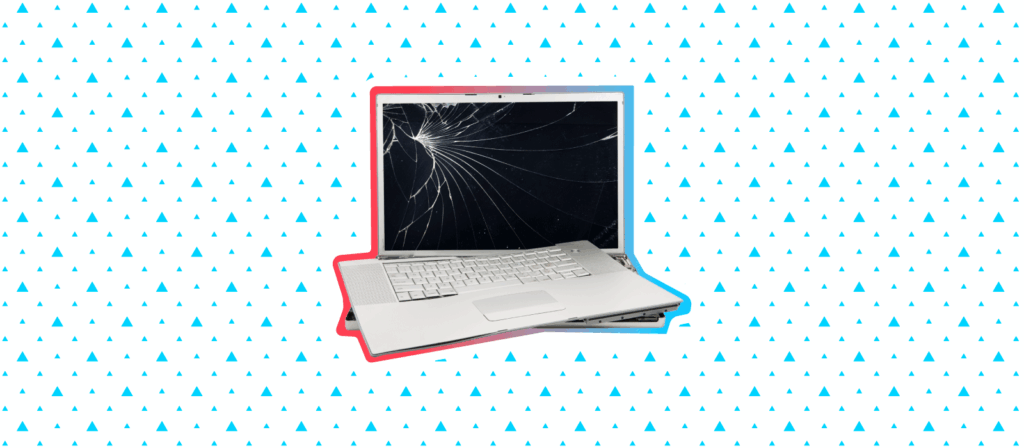Industry 4.0 and hybrid provide the necessary interconnectivity to elevate employee experience and company culture, impacting the future of work.
The only thing that’s constant in life is change, as they say. The COVID-19 pandemic forever altered how the modern workplace functions: trends clearly show the demand for the hybrid workplace model. Many companies are now choosing hybrid workforce models to power their operations. As a result, they are adopting the technology necessary to complement this type of flexible model.
But the modern workforce was already changing long before the pandemic hit. So how did we arrive at a place where we can effectively implement hybrid work as a viable option?
Industry 4.0, or the next evolution of how people live and work with the rise of technology, is making waves in how people think about work.
The question is: with all this new technology at our fingertips—coupled with Industry 4.0 and the hybrid workplace model—how is employee performance impacted?
In this article, we explore interconnectivity within the future of work and how it shifts the employee experience.
The rise of Industry 4.0 and the hybrid workplace
Industry 4.0, otherwise known as the fourth industrial revolution, continues to change the way we work, live, and play.
At the crux of this revolution is interconnectivity. Technology that has emerged from Industry 4.0, includes the Internet of Things (IoT), smart buildings, sensors, AI-driven data, and big data. These technologies have paved the way for the modern workplace as we know it. For example, without this technology, remote working would not be possible, or at the very least, what is it today.
Like the industrial revolutions that have come before it, Industry 4.0 is disruptive in its own right. The creation of mainframe computing, and eventually automation, marked the start of the previous industrial revolution, Industry 3.0. This eventually led to the development of hardware, software, and other foundational technologies that sparked Industry 4.0.
For example, while this technology, like sensors, is not necessarily “new”, it’s primarily associated with Industry 4.0 rather than Industry 3.0 when it originated.
Interconnective technology
Companies were using cutting edge technology that was refined in Industry 4.0 long before the COVID-19 pandemic forced remote-only working. This includes:
- Smart sensor technology that identifies motion, speed, or vibrations to track where employees are seating, to verify occupied workstations, and to exchange data to other devices
- AI-based technology to optimize building operations and functions
- Data and insights to help facilities teams make better decisions about occupancy and operations
- Cybersecurity for enhanced company protection of assets and information
Normalizing the evolution of technology
While this technology was continuously evolving, the pandemic accelerated the changes Industry 4.0 was normalizing into the workforce. Companies had to ensure their remote employees could work productively from home, but also remain connected and safe.
As a result, many organizations had to embrace new technology and working styles, like flexible working and communication tools.
As COVID-19 vaccinations being introduced, companies are planning about what the “return-to-work” will look like, especially in the wake of this interconnectivity.
To be successful in the future, it’s important for companies to embrace cutting edge technologies that will provide an edge. For example, Facebook unveiled Horizon Workrooms, which allows remote workers to use Oculus VR headsets to join a virtual office. Users’ avatars are projected as part of the “Metaverse”, a virtual world where people use avatars to socialize, work, and entertain themselves. While we can’t predict exactly which technologies the future will hold, we do know that remote work is increasing and companies are embracing “hybrid”, so an idea like this isn’t all that far from reality.
Many companies have embraced a mixed work environment, where employees work part of the time at home and part of the time in the office. This is known as a hybrid workplace. Industry 4.0 and the hybrid workplace position companies to rely on technology in a different way than before the pandemic.
For example, smart buildings are an element of facilities management that already embraced Industry 4.0; however, the advent of the pandemic demanded new rules and benchmarks. Smart buildings were already able to collect data around occupancy and threats, but the pandemic has forced further integration. This combined smart buildings with technology that was traditionally not considered part of building infrastructure.
Industry 4.0 and the hybrid workplace emphasizes the use of integrated workplace management software (IWMS), like OfficeSpace, to offers tools, including desk booking, check-ins, and more. These add-ons allow property and business worlds to mix that was driven by the rise of Industry 4.0 and the rise of IoT.

COVID-19’s impact on the modern workplace and the future of work
The pandemic may have altered how businesses use technology to grow and operate, especially over the past year, but that wasn’t the only change. For example, the use of personal protective equipment (PPE) and social distancing may slowly start to dwindle with vaccines, but there are changes that will likely stay.
Let’s look at several ways the pandemic impacted the modern workplace.
The interconnectivity of Industry 4.0 and the hybrid workplace can elevate the employee experience
For many remote workers, working from home full-time was a big adjustment. Not only did teams have to figure out how to effectively communicate, but other at-home challenges arose, like working alongside a partner or roommates, juggling family obligations and responsibilities, and feelings of isolation, loneliness, and increased stress.
According to Microsoft, 70% of employees welcome a hybrid work model in which they split their time between remote work and working in the office.
“Ten years from now, jobs will call for more thinking and less doing and be distributed across an increasing number of people in different communities and geographies,” Peter Sondergaard, an analyst at Gartner, told Star2Star in an article. “Such changes will require new models of learning and development as well as the creation of hybrid workplaces that combine technology and information to accommodate a mix of employees.”
Peter Sondergaard, Analyst, Gartner
The hybrid workstyle has many benefits for employees and businesses alike, including:
- Improved work-life balance
- Flexibility
- No commute or an altered commute
- Increased time with family, friends, and outside-work activities
- Increased productivity and performance
This workstyle is the best of both worlds fused into one. With the level of flexibility the hybrid workstyle offers, employees can experience more balance in their daily lives—both personally and professionally.
Digital overload is alive and well
Because teams are so connected by technology while at home, it can be difficult to turn work “off.” With work being so easily accessible, working from home can make it challenging to know when to step away from the computer.
As a result, some people are finding themselves overworking and burning out.
According to the same report from Microsoft, the average meeting is 10 minutes longer than before. And the average Microsoft Teams user is sending 42% more chats per person after hours. In other words, people are spending more time working because it can be difficult to disconnect from work while working at home.
Companies can open their talent pool in a hybrid work environment
The days of “must be willing to relocate” are diminishing as we know it. Companies can expand their talent pool on a national or global scale without geographical restrictions or barriers.
The number of remote job listings has increased significantly over the last year. The number of remote jobs on LinkedIn has increased by more than five times during the pandemic.
This gives companies access to a wider, better talent pool, and also gives employees access to more job opportunities.

How businesses can embrace Industry 4.0 and hybrid
There’s no one way to adopt the hybrid workstyle. This is one of the best parts of this kind of flexible work method. However, with so much technology readily available, it can be overwhelming. It’s important to figure out how to reconfigure your workplace to be one that’s truly hybrid.
The hybrid, blended workforce here to stay. Here’s how companies can integrate both Industry 4.0 and the hybrid workplace into their organization.
Adopt activity-based working and agile working styles
Here’s a statistic that might come as a surprise: 36% of employees say they’d prefer an agile workplace over a pay raise. The same study finds that 63% of managers link revenue growth directly to flexible working.
The bottom line: flexibility means boosts in productivity and revenue.
Therefore, it is critical to build an office environment that acknowledges that employees may work in different ways and at different times.
Activity-based working and agile working fall into the hybrid work methodology; both offer ways for employees to work how and when they feel most productive and comfortable.
Activity-based working focuses on the actual workspaces within your office dedicated to specific types of work.
A few cornerstones of activity-based work are:
- Ad-hoc meetings rather than unnecessary ones
- Face-to-face collaboration
- Dedicated spaces to particular activities like independent work and collaborative work
Agile working refers to the flexibility of an organization both in and out of the office.
Examples of an agile workplace include:
- Open to change and flexibility throughout
- Embrace individual or unique employee needs and workstyles
- Provide employees with the equipment and technology they need to do their best work wherever they are
Thanks to technology like Zoom, Slack, and other workplace tools, asynchronous work can be more productive than synchronous work.
Leverage IFM and IWMS software
Facility management software like integrated workplace management systems (IWMS) and integrated facilities management (IFM) software can help facility managers (FMs) streamline office operations.
IFM software helps FMs understand what’s happening across properties and building floors. It has a focus on streamlining tasks and operations across the board. IWMS software connects stand-alone resources together to make one fully integrated workplace system.
Part of this software may include tools like desk and room booking software. These tools can further position employees to work when and where they’re most productive.
For example, employees can book a shared meeting space, conference room, or an independent desk for quiet deep work from home before arriving at the office. Or, they can use a tool like Visual Directory® to find, book, and connect to what they’re looking for. All of this can be available from their mobile device or through integrations like Slack.
Approaches to optimize the office for productivity
So how can facility managers optimize their office for productivity with IWMS and IFM software? There are several approaches to take, including:
- Neighborhoods: Office neighborhoods are spaces specifically dedicated to teams, departments, or employees who have similar job functions. FMs can use workplace software to plan these spaces, optimize them based on occupational data, and understand how to make the best use of them.
- Shift work: Shift work is dividing employees into groups where only one group is present in the office at a time while the other works remotely. This can be a great option if you’re thinking about downsizing your space to cut costs as well. IWMS and IFM software can help FMs understand what this might look like based on employee numbers and team needs.
- Desk and room booking: Employees can book desks or rooms in advance—whether they’re at home or in the office—without worrying about availability or double booking. This can achieved right within most IWMS tools.
Get clear on your workplace data
One of the best ways to truly understand occupancy in your office is to collect the related occupancy data. Without occupational data, it’s difficult to get a pulse on how your space is functioning. Not only in the present, but also how to optimize it for the future.
Reporting and analytics tools give you the insights you need to make the best data-backed decisions for your space. This can includehow many people you can safely have in the office. This software helps FMs understand real-time occupational metrics, as well as who’s in the office (and being safe). It also provides access to future planning tools like forecasting reports so you know when you’ll run out of space.
Beyond understanding your space from a operational perspective, occupational data helps FMs and organizations make the best space planning decisions. With companies thinking about how best to return to the office, having access to analytics gives FMs an advantage in planning, forecasting, and understanding how best to use their space.
Take employee request management, for example. Rather than wasting time thinking about how to better manage requests, analytics can offer solutions. Good analytics identifies trends by requester, department, and time of day to see where a possible solution lies.
As the hybrid workplace model continues to evolve, having a pulse on office operations from an analytics perspective is key to staying ahead and remaining in sync as a company.

The future of work is Industry 4.0 and hybrid
There’s no question the future of work depends on interconnectivity.
With people wanting to go back into the office at least part of the time, leveraging technology for the long-term is critical for businesses to grow. The 9-5, in-the-office-all-day style of working is now gone. Employees now have more choices and flexibility with where and how they work. Companies must have the technology that provides the most insights on how to plan for the future of work. The workplace is ever-changing, so having data-driven insights will support the new hybrid workplace.
The pandemic accelerated what Industry 4.0 was in the process of doing. It sped up combining technology with the workplace to foster productivity, cut costs, and improve the overall employee experience.
Where should businesses start?
So where should businesses start to adopt technology for the new hybrid model? Companies must embrace a more flexible workplace, combining Industry 4.0 and the hybrid workplace to enhance the employee experience.
The workplace of the future is the hybrid work environment. And the new normal demands that companies embrace the right technology to maintain connectivity between both the digital workplace and the traditional workplace.
Implement the right technology. From collaboration tools like Slack and video conferencing tools like Zoom or Teams, to an IWMS that can help streamline operations and plan workspaces effectively, it’s important to adopt the right tools. It is essential to gather the data that allows for better decision making. Especially about where employees are working and how they want to work. The technology you introduce should support the hybrid ideology.
For example, if employees express interest in shift work, solutions can be explored around how that might be able to benefit your organization.
The best part is that you don’t have to go it alone. Workplace software can help you determine the best course of action to take based on your space, employees, budget, and goals.
Need help figuring out how best to use hybrid to make your office better? We can help. Learn more about workplace software by requesting a demo.
Photos: Gerd Altmann, Julia M Cameron, Canva Studio, Sora Shimazaki




